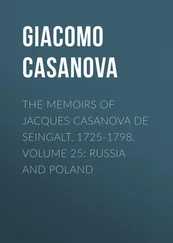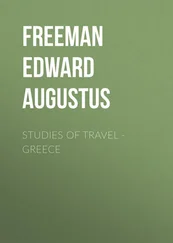John Stephens - Incidents of Travel in Greece, Turkey, Russia, and Poland, Vol. 2 (of 2)
Здесь есть возможность читать онлайн «John Stephens - Incidents of Travel in Greece, Turkey, Russia, and Poland, Vol. 2 (of 2)» весь текст электронной книги совершенно бесплатно (целиком полную версию без сокращений). В некоторых случаях можно слушать аудио, скачать через торрент в формате fb2 и присутствует краткое содержание. Год выпуска: 1838, Жанр: Путешествия и география, на английском языке. Описание произведения, (предисловие) а так же отзывы посетителей доступны на портале библиотеки ЛибКат.
- Название:Incidents of Travel in Greece, Turkey, Russia, and Poland, Vol. 2 (of 2)
- Автор:
- Жанр:
- Год:1838
- ISBN:нет данных
- Рейтинг книги:4 / 5. Голосов: 1
-
Избранное:Добавить в избранное
- Отзывы:
-
Ваша оценка:
- 80
- 1
- 2
- 3
- 4
- 5
Incidents of Travel in Greece, Turkey, Russia, and Poland, Vol. 2 (of 2): краткое содержание, описание и аннотация
Предлагаем к чтению аннотацию, описание, краткое содержание или предисловие (зависит от того, что написал сам автор книги «Incidents of Travel in Greece, Turkey, Russia, and Poland, Vol. 2 (of 2)»). Если вы не нашли необходимую информацию о книге — напишите в комментариях, мы постараемся отыскать её.
Incidents of Travel in Greece, Turkey, Russia, and Poland, Vol. 2 (of 2) — читать онлайн бесплатно полную книгу (весь текст) целиком
Ниже представлен текст книги, разбитый по страницам. Система сохранения места последней прочитанной страницы, позволяет с удобством читать онлайн бесплатно книгу «Incidents of Travel in Greece, Turkey, Russia, and Poland, Vol. 2 (of 2)», без необходимости каждый раз заново искать на чём Вы остановились. Поставьте закладку, и сможете в любой момент перейти на страницу, на которой закончили чтение.
Интервал:
Закладка:
The oldest monument is that of Wladislaus le Bref, built of stone, without any inscription, but adorned with figures in bas-relief, which are very much injured. He died in thirteen hundred and thirty-three, and chose himself the place of his eternal rest. Charles the Twelfth of Sweden, on his invasion of Poland, visited the Cathedral Church, and stopped before this tomb. A distinguished canon who attended him, in allusion to the position of John Casimir, who was then at war with the King of Sweden, remarked, "And that king was also driven from his throne, but he returned and reigned until his death." The Swede answered with bitterness, "But your John Casimir will never return." The canon replied respectfully, "God is great and fortune is fickle;" and the canon was right, for John Casimir regained his throne.
I approached with a feeling of veneration the tomb of Casimir the Great. It is of red marble; four columns support a canopy, and the figure of the king, with a crown on his head, rests on a coffin of stone. An iron railing encloses the monument. It is nearly five hundred years since the palatins and nobles of Poland, with all the insignia of barbaric magnificence, laid him in the place where his ashes now repose. The historian writes, "Poland is indebted to Casimir for the greatest part of her churches, palaces, fortresses, and towns," adding that "he found Poland of wood and left her of marble." He patronized letters, and founded the University of Cracow; promoted industry and encouraged trade; digested the unwritten laws and usages into a regular code; established courts of justice; repressed the tyranny of the nobles, and died with the honourable title of King of the Peasants; and I did not forget, while standing over his grave, that beneath me slept the spirit that loved the groves of Lobzow and the heart that beat for Esther the Jewess.
The tomb of Sigismund I. is of red marble, with a figure as large as life reclining upon it. It is adorned with bas-reliefs and the arms of the republic, the white eagle and the armed cavalier of Lithuania. He died in fifteen hundred and forty-one, and his monument bears the following inscription in Latin: "Sigismund Jagellon, King of Poland, Grand-duke of Lithuania, Conqueror of the Tartars, of the Wallachians, of the Russians and Prussians, reposes under this stone, which he prepared for himself." Forty years ago Thaddeus Czacki, the Polish historian, opened the tombs of the kings, and found the head of Sigismund resting upon a plate of silver bearing a long Latin inscription; the body measured six feet and two inches in height, and was covered with three rich ermines; on the feet were golden spurs, a chain of gold around the neck, and a gold ring on one finger of the left hand. At his feet was a small pewter coffin enclosing the body of his son by Bone Sforza.
By his side lies the body of his son Sigismund II., the last of the Jagellons, at whose death began the cabals and convulsions of an elective monarchy, by which Poland lost her influence among foreign powers. His memory is rendered interesting by his romantic love for Barbe Radzewill. She appeared at his father's court, the daughter of a private citizen, celebrated in Polish history and romance as uniting to all a woman's beauty a mingled force and tenderness, energy and goodness. The prince had outlived all the ardour of youth; disappointed and listless amid pleasures, his energy of mind destroyed by his excesses, inconstant in his love, and at the summit of human prosperity, living without a wish or a hope; but he saw Barbe, and his heart beat anew with the pulsations of life. In the language of his biographer he proved, in all its fulness, that sentiment which draws to earth by its sorrows and raises to heaven by its delights. He married her privately, and on his father's death proclaimed her queen. The whole body of nobles refused to acknowledge the marriage, and one of the nuncios, in the name of the representatives of the nation, supplicated him for himself, his country, his blood, and his children, to extinguish his passion; but the king swore on his sword that neither the diet, nor the nation, nor the whole universe should make him break his vows to Barbe; that he would a thousand times rather live with her out of the kingdom than keep a throne which she could not share; and was on the point of abdicating, when his opponents offered to do homage to the queen. When Czacki opened the coffin of this prince, he found the body perfectly preserved, and the head, as before, resting on a silver plate containing a long Latin inscription.
At the foot of his coffin is that of his sister and successor, Anne; and in a separate chapel is the tomb of Stephen Battory, one of the greatest of the kings of Poland, raised to the throne by his marriage with Anne.
I became more and more interested in this asylum of royal dead. I read there almost the entire history of the Polish republic, and again I felt that it was but a step from the throne to the grave, for near me was the great chair in which the kings of Poland were crowned. I paused before the tomb of John Casimir; and there was something strangely interesting in the juxtaposition of these royal dead. John Casimir lies by the side of the brother whom he endeavoured to supplant in his election to the throne. His reign was a continued succession of troubles and misfortunes. Once he was obliged to fly from Poland. He predicted what has since been so fearfully verified, that his country, enfeebled by the anarchy of its government and the licentiousness of the nobles, would be dismembered among the neighbouring powers; and, worn out with the cares of royalty, abdicated the throne, and died in a convent in France. I read at his tomb his pathetic farewell to his people.
"People of Poland,
"It is now two hundred and eighty years that you have been governed by my family. The reign of my ancestors is past, and mine is going to expire. Fatigued by the labours of war, the cares of the cabinet, and the weight of age; oppressed with the burdens and vicissitudes of a reign of more than twenty-one years, I, your king and father, return into your hands what the world esteems above all things, a crown, and choose for my throne six feet of earth, where I shall sleep with my fathers. When you show my tomb to your children, tell them that I was the foremost in battle and the last in retreat; that I renounced regal grandeur for the good of my country, and restored my sceptre to those who gave it me."
By his side, and under a monument of black marble, lies the body of his successor, Michel Wisniowecki, an obscure and unambitious citizen, who was literally dragged to the throne, and wept when the crown was placed upon his head, and of whom Casimir remarked, when informed of his late subjects' choice, "What, have they put the crown on the head of that poor fellow?" And again I was almost startled by the strange and unnatural mingling of human ashes. By the side of that "poor fellow" lies the "famous" John Sobieski, the greatest of the long line of kings of a noble and valorous nation;
"One of the few, the immortal names, That were not born to die."
On the lower floor of the church, by the side of Poniatowski, the Polish Bayard, is the tomb of one nobler in my eyes than all the kings of Poland or of the world. It is of red marble, ornamented with the cap and plume of the peasant of Cracow, and bears the simple inscription "T. Kosciusko." All over the church I had read elaborate panegyrics upon the tenants of the royal sepulchres, and I was struck with this simple inscription, and remembered that the white marble column reared amid the magnificent scenery of the Hudson, which I had often gazed at from the deck of a steamboat, and at whose base I had often stood, bore also in majestic simplicity the name of "Kosciusko." It was late in the afternoon, and the group of peasants, two Poles from the interior, and a party of the citizens of Cracow, among whom were several ladies, joined me at the tomb. We could not speak each other's language; we were born and lived thousands of miles apart, and we were strangers in our thoughts and feelings, in all our hopes and prospects, but we had a bond of sympathy at the grave of Kosciusko. One of the ladies spoke French, and I told them that, in my far distant country, the name of their nation's idol was hallowed; that schoolboys had erected a monument to his memory. They knew that he had fought by the side of Washington, but they did not know that the recollection of his services was still so dearly cherished in America; and we all agreed that it was the proudest tribute that could be paid to his memory, to write merely his name on his monument. It meant that it was needless to add an epitaph, for no man would ask, Who was Kosciusko?
Читать дальшеИнтервал:
Закладка:
Похожие книги на «Incidents of Travel in Greece, Turkey, Russia, and Poland, Vol. 2 (of 2)»
Представляем Вашему вниманию похожие книги на «Incidents of Travel in Greece, Turkey, Russia, and Poland, Vol. 2 (of 2)» списком для выбора. Мы отобрали схожую по названию и смыслу литературу в надежде предоставить читателям больше вариантов отыскать новые, интересные, ещё непрочитанные произведения.
Обсуждение, отзывы о книге «Incidents of Travel in Greece, Turkey, Russia, and Poland, Vol. 2 (of 2)» и просто собственные мнения читателей. Оставьте ваши комментарии, напишите, что Вы думаете о произведении, его смысле или главных героях. Укажите что конкретно понравилось, а что нет, и почему Вы так считаете.







![William Frith - John Leech, His Life and Work. Vol. 1 [of 2]](/books/747171/william-frith-john-leech-his-life-and-work-vol-thumb.webp)

![William Frith - John Leech, His Life and Work, Vol. 2 [of 2]](/books/748201/william-frith-john-leech-his-life-and-work-vol-thumb.webp)


